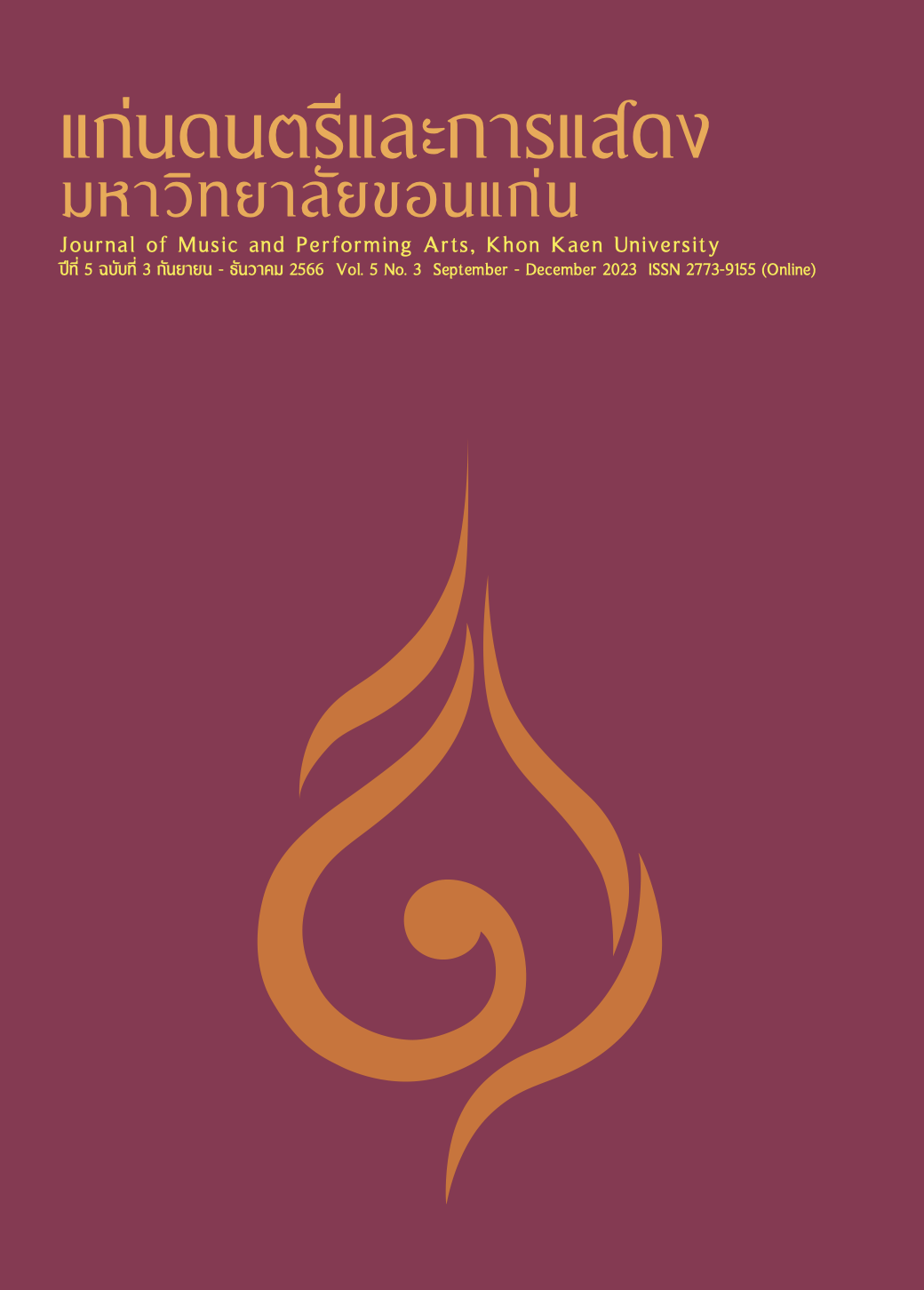The Making of Video Performance “Feeling”: Learning Feeling of Fragility through Meditation, Body and Sites
Keywords:
Performance, Video Performance, Creative ProcessAbstract
Feeling is a performance thesis for an undergraduate degree in performing arts. It is represented in the form of Video performance. As an artist-creator, I want to learn about my personal feelings of vulnerability and fragility in the creative process which are inspired by grandmother’s incident. The performance concept “Learning your own vulnerability”. The creative process consists of 5 steps: (1) concept study and data collection; (2) experimentation on presentation and style search; (3) story board planning; (4) filming and editing, and (5) public display. It takes a total of 7 months to work. The creative process involves the skills and techniques of body movement, art compositions and video editing. The work aims to reflect and convey the state of feeling connected with the vulnerability of the creator. There are 3 episodes released: (1) Fragile – feelings of vulnerability due to changes in grandmother's health; (2) Fear – fear of fragility due to being away from grandmother and (3) Miss – letting go and accepting vulnerability and loss. I found that, in addition to obtaining raw materials from exploring the feeling of creating works, vulnerability is also an important quality that allows more imagination to develop. This makes it possible to see more opportunities and options in terms of presentations and images that are deeply connected to feelings.
Downloads
Published
Versions
- 2024-01-01 (3)
- 2024-01-01 (2)
- 2023-12-31 (1)





